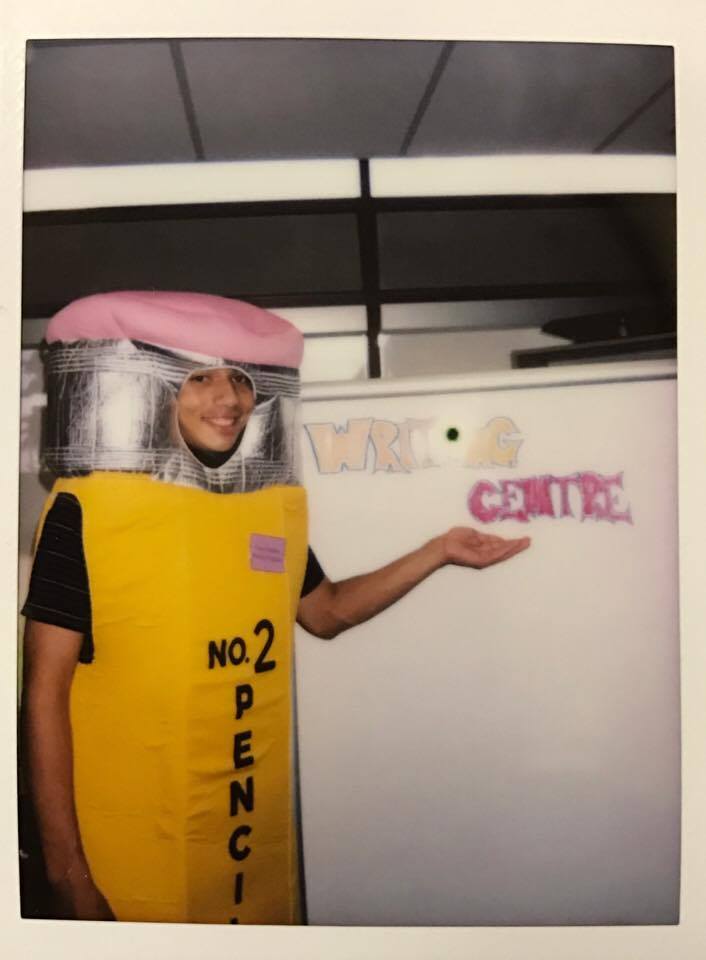So … A comma splice walks into a bar, it has a drink and then leaves.
Get it? If not, you’re definitely not alone. Comma splices are tricky little grammatical errors that pop up in a lot of writing, and they can be devilishly hard to catch.
What’s a Comma Splice?
Okay. A comma splice occurs when two complete sentences are slapped together with only a comma (AKA the incorrect way). Like most other things, there are rules, and commas must follow them. Sure, you can join two sentences together with a comma, but there’s a catch. Keep reading to find out what it is!
First, a few examples of comma splices:
I walked my dog to the park, she loved it.
The UPEI Writing Centre is located in the library learning commons, we can teach you about comma splices.
Some people have difficulty with fragments, run-on sentences, and comma splices, others have problems with the use of semicolons, colons, and other forms of punctuation.
All of the above sentences are actually two complete sentences. That is, each half of each sentence has its own subject and verb and expresses a complete thought. Consider:
– The UPEI Writing Centre is located in the library learning commons[.]
– [W]e can teach you about comma splices.
How to Fix Your Comma Splices:
Solution #1: Come to a full stop. Period.
If each half of your sentence expresses a complete thought, then why not divide and conquer? Simply replace the comma with a period, and — voila. Problem solved!
Example:
The UPEI Writing Centre is located in the library learning commons. We can teach you about comma splices.
Solution #2: Be a sophisticate. Use a semicolon
If the ideas in the two sentences are related, then a semicolon may be the best remedy for your comma splice ennui. Make sure that you have a clear connection between both clauses before you experiment with the semicolon, though.
Example:
Some people have difficulty with fragments, run-on sentences, and comma splices; others have problems with the use of semicolons, colons, and other forms of punctuation.
Solution #3: Hop aboard, and visit the (con)junction.
Anyone remember “Conjunction junction what’s your function?†from Schoolhouse Rock? No? It’s where a little cartoon engineer sings about the joy of “hooking up words, phrases, clauses†by using a conjunction, and it’s a good time. Check it out: https://www.youtube.com/watch?v=ODGA7ssL-6g
A conjunction (like “and,†“but,†“for,†or “soâ€) is a joining word that connects words, phrases, or sentences. However, if you want to join two sentences together with a conjunction, you also need to include a comma. Yes. I know. You’re putting it all together now, and it’s pretty darn exciting! This stuff makes me shiver, too. Because … the last way to fix a comma splice … is to add a conjunction!
Example:
I walked my dog to the park, and she loved it.
If you want more in-depth information about comma splices, take a look at these awesome websites: http://www.uc.utoronto.ca/comma-splices
https://owl.english.purdue.edu/engagement/2/1/34/
Or come and see me and my people at the WC.
G. Graphite
